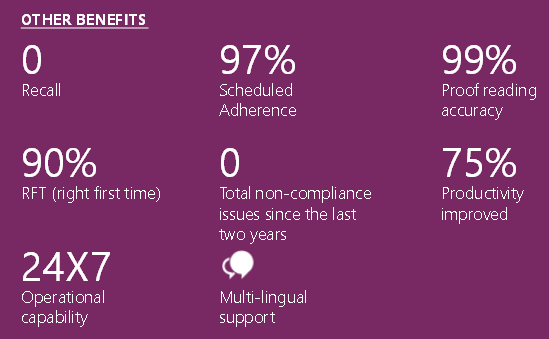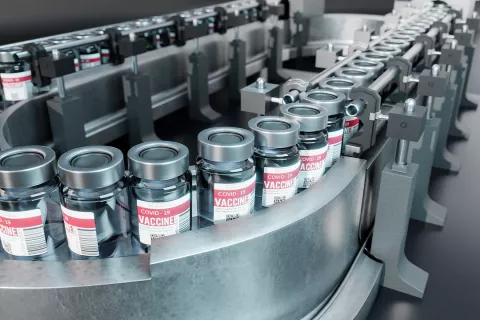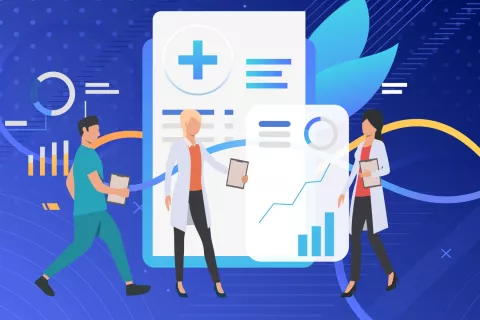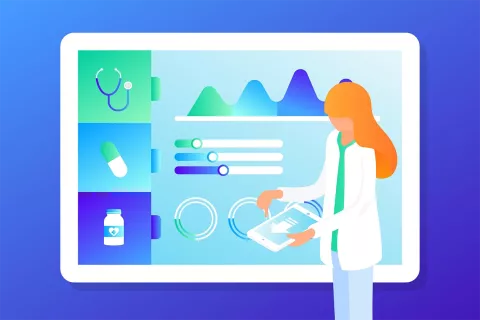
Artwork design is an essential process in the supply of a pharmaceutical product which basically ensures patient safety while reducing recall risk.
Artwork and labeling functions are an intrinsic part for the supply of a pharmaceutical product, and are under constant pressure to deliver an increasing number of projects in a compressed time frame. In the current business scenario, companies strive to differentiate themselves by reducing time to market, deliver quick product mix and quickly change products to market needs. Pharmaceutical and Life Science companies are governed by FDA validation, stringent quality norms and GMP. Miniscule errors can be to be costly, damaging and puts companies at risk owing to the threat of product recalls, health authority warnings and fines.
The overall commercial success of a drug or pharmaceutical company is dependent on the right first time artwork, prior to entering into a new market. Costs associated with pharmaceutical packaging amounts up to 70% of the cost of the finished product. It is also reported that 35-40% of product recalls are attributed to packaging and labeling errors and omissions. There have been a total of 455 product recall notices out of which 51% were attributed to mislabeling and 13% because of faulty packaging, according to data covered over a six month period by the Food and Drug Administration (US FDA).
Globalization and Pharmaceutical Companies
Owing to the expanding global markets, pharmaceutical companies must combat localization issues which include language, cultural and regulatory requirements. Emerging pharmaceutical markets also pose a challenge to the pharmaceutical companies which are trying to gain a foothold in the market. Delivering the Right First Time Artwork will Pharmaceutical companies introduce new drugs and gain some ground in the new emerging market landscape.
Importance of Artwork Management: Supporting Product Launch And Patient Safety
Producing artwork for the pharmaceutical is a significantly more disciplined process with the need for compliance, quality standards and validation which is of upmost importance. Pharmaceutical products can only be sold if they are packaged properly, shipping will only happen if the text on the packaging is absolutely correct. If incorrect text is printed on the product, the pharmaceutical company’s reputation and profit take a severe setback. Artwork as a function is critical as it enables a Pharma company in supporting product launch and patient safety.
The function although does not offer a direct strategic competitive advantage however it offers the GxP attention as the efficacy of an active, packing line clearance and change control. Pharmaceutical product faces a tough test, and artwork design errors however minimal do have catastrophic results and also serve as the basis of the highest cause of product recall. Typically, artwork design involves coordinating information from many different sources.
Product Recall: An Industry Estimate
- 35-40% pharmaceutical product recalls are endorsed to pack labeling errors and omissions
- 2-3 product recall leads to higher costs
- Lack of process standardization
- Staffing issues lead to delay in artwork release
- Number of rework iterations ranging between 7 to 8 cycles
Approach: Process Improvement Complimented by Technology
Artwork processes are still managed by manual process; Artwork management is nothing but a combination of good project management, repository management, version and label regulatory control and actual authoring process. Pharmaceutical companies must strategically build a streamlined process to avoid the perils of outsourcing to contractors which adds to compliance risks leading to fines, product recalls etc.
Robust Artwork Process
There has been a petition owing to which there have been innovations in technology, stringent quality control and the need to streamline systems for creating an accurate automated workflow process.
- Build an integrated and closed loop procedure for artwork management while continuously update and build the processes
- Establish standard operating procedure and governance processes in product development processes
- Set up appropriate artwork infrastructure and software solution to adhere to compliance
- Build knowledge ebase repository of Artwork to avoid rework and repetitive mistakes
- Integrate Artwork process with R&D and supply chain
Artwork Management Solution
Streamlining artwork management processes has been the core focus of Pharmaceutical industry, which invests heavily in the packing every year. A trusted custom software solution has been the need of the hour, which can replace the manual process, which is prone to defects, delays in the design of lay outs, forms and approvals. An automated solution, aids in plugging loop-holes, closing the gaps and fast tracking the entire process right from design to print.
Collaboration Challenges
Artwork and Labeling involves collaboration with various internal and external units. This includes
- Product Development
- Regulatory Affairs and Labeling Management
- Artwork Management and Vendor Collaboration
- Change Control
- Package Product Manufacturing
In addition, interaction with so many departments brings its own challenges
- Redundant and repeat process
- Absence of visibility across the chain
- Lack of coordination
Technical Challenges & Possible Solutions:
- Understanding the Current Artwork Process and Business Scenarios
- Assessing functional groups involved in the current artwork review and approval process
- Assessing the number of artwork studios involved in the artwork creation
- Assessing current systems, software/applications and tools used in artwork process
- Assess current artwork repository
- Assessing the scope in terms of number of markets, manufacturing sites, print suppliers, third party manufacturers and third party markets
- Understanding the scope in terms of volumes – Number of SKU’s, Brands/Products etc…
- Assessing the current business challenges and constraints in the artwork process
- Define scope and success criteria of the pilot
- Current state assessment report
- GAP analysis report
- Recommendations in terms of Target- People, Process and System implementation
- Pilot scope specification
Defined Artwork Management Process Assures Right First Time Artwork
Example model process with defined control points to ensure error free networks
Create Source text→Define Change→Produce Artwork→Produce Printer Proof→Implement
Make sure the text is right, proof read and verify for final printing
Elements required for a successful artwork capability.

Improvements to Artwork Capabilities: A Phased Approach
Step 1: In Control
Compliant GxP process
Formal approvals at key control points
Meeting critical artwork change milestones
Step 2: Efficient & Effective
Meeting performance requirements of business
Optimal use of resources
Processes tuned to ensure effective execution
Step 3: World Class
Appropriate use of best practices
Benchmarked with external capability
Agile adaptation to changing business models
Business Advantages of Streamlined Artwork Function
A streamlined artwork function offers increased quality through reduction of product recalls or critical incidents & product launch due to Artwork errors. It also improves branding consistency among the artworks in terms of design, color and text while giving creditability to product and brand.
As it will be audit and compliance driven – One process will be followed across the globe, thus reducing compliance driven penalties. In addition, it gives companies the opportunities to plan ahead around staffing and has measurable SLA’s around each step of the Artwork process. Furthermore, artworks can be reused for similar markets, thus significantly reducing time and cost; product launch schedule timelines can be planned accordingly. Overall Pharmaceutical companies can understand the triggers of artwork changes and business dynamics around it.

Delivering quality artwork is a complex endeavor involving many moving parts in addition packaging and artwork presents a significant compliance risk. Artwork management is critical to delivery of a Pharmaceutical company’s business strategy. Right First Time Artwork can be achieved once the company undertakes the assessment of the current situation and base it against a comprehensive assessment model. A through gap analysis can also be done to understand key improvement areas across the organization.









